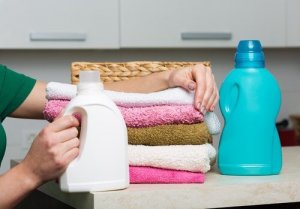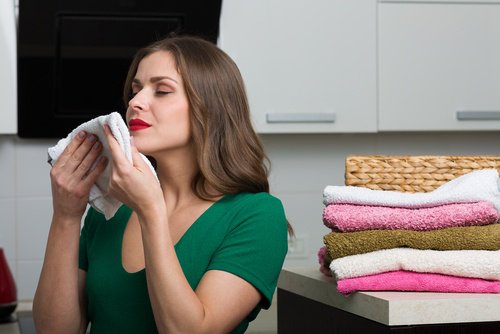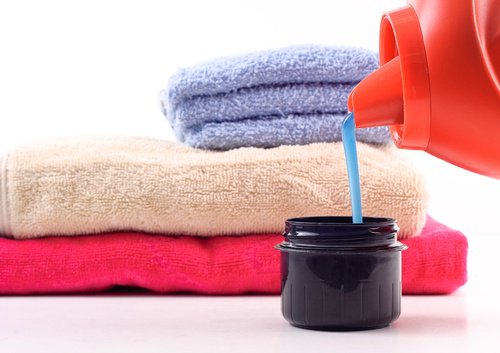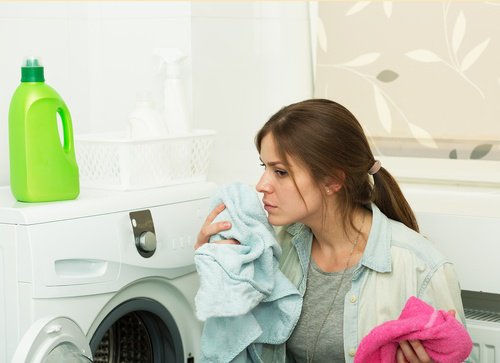The Dangers of Using Fabric Softener

Fabric softener is a very popular product that’s designed to preserve the softness of your clothes while giving them a pleasant, fresh scent. You can find fabric softeners being used in most homes, thanks to the fact that they’re readily available and affordable.
However, what most consumers don’t know is that most of these products are loaded with harmful chemicals that can compromise your health, and especially the health of children. While their marketing campaigns may advertise that they’re perfect for the whole family, these companies prefer not to disclose the dangers of using fabric softener in order to protect their interests.
Fabric softeners often contain harmful elements that aren’t immediately noticeable, just like other chemicals that are used to make household cleaners. Some of them cause respiratory problems and skin conditions when you come into direct or indirect contact with them.
More than half of the fabric softeners on the market have been shown to contain more than two chemicals that are known to cause health complications. Today we want to reveal some of the most common chemicals found in fabric softeners so you’ll learn to identify them on the product labeling. Find out more!
Alpha-terpineol

This is a colorless, flammable liquid with a lilac scent that’s used as a fragrance additive for fabric softeners. However, the US Environmental Protection Agency warns that this compound can cause the development of disorders like:
- Imbalances in the central nervous system
- Hypothermia
- Chronic headaches
- Depression and anxiety
- Loss of muscle coordination
- Irritation
You want to know more? See: How To Make Toxin-Free Fabric Softener
Benzyl acetate
This fragrance additive is one of the most commonly used products in the manufacture of laundry detergents and fabric softeners. It has a floral scent similar to jasmine and, like the above, is a colorless liquid. According to this report by the World Health Organization, over the years, its presence in cleaning products has been linked to the following:
- Drowsiness
- Irritation of the eyes and skin
- Breathing difficulties
- Sore throat
Benzyl alcohol

This colorless compound has a pleasant aroma that’s extracted from plants and flowers. In addition to fabric softeners, you can find it in essential oils like ylang ylang hyacinth and jasmine. When it comes into contact with the body it can be related to:
- Irritation of the upper respiratory tract
- Poisoning and vomiting
- Irritation of the scalp when used topically, according to the US National Library of Medicine.
Ethyl acetate
This sweet-smelling ingredient is used as a solvent in many household products. However, the US Environmental Protection Agency has classified it as a hazardous waste that should be avoided. The risks to your health include:
- Kidney and liver damage
- Respiratory tract infections
- Fatigue and anemia
Chloroform

- Drowsiness
- Dizziness, vomiting, and nausea
- Headaches
- Liver and kidney damage
- Cardiac disorders
- Dermatological conditions
- Respiratory tract infections
Please read: 5 weird headache triggers
Terpinolene
Terpinolene is yet another colorless liquid that lends a citrus smell to many household cleaning products. Companies also use it in the manufacture of fabric softeners, shaving creams, bars of soap, and a variety of other items commonly found in the home. Terpinolene has been related to problems such as:
- Eye irritation
- Skin disorders
- Sore throat
- Inflammation of the sinuses
The reason why these effects tend to be medium or long term is because the products you use often contain only very small amounts of these substances. The problem is that we use most of them on an almost daily basis, so over time the harmful compounds entering your body build up.
To avoid the dangers of using fabric softener, check the packaging first or opt for environmentally friendly alternatives, such as apple cider vinegar, or baking soda.
All cited sources were thoroughly reviewed by our team to ensure their quality, reliability, currency, and validity. The bibliography of this article was considered reliable and of academic or scientific accuracy.
- ATSDR (Agencia para Sustancias Tóxicas y el Registro de Enfermedades). Resúmenes de Salud Pública – Cloroformo (Chloroform). 2016. Available at: https://www.atsdr.cdc.gov/es/phs/es_phs6.html. Accessed 10/28, 2018.
- EPA. Agencia de Protección Ambiental de Estados Unidos. 2018. Available at: https://espanol.epa.gov/. Accessed 10/28, 2018.
- Wikipedia. Agencia de Protección Ambiental (Estados Unidos). 2018. Available at: https://es.wikipedia.org/wiki/Agencia_de_Protecci%C3%B3n_Ambiental_(Estados_Unidos). Accessed 10/28, 2018.
This text is provided for informational purposes only and does not replace consultation with a professional. If in doubt, consult your specialist.








